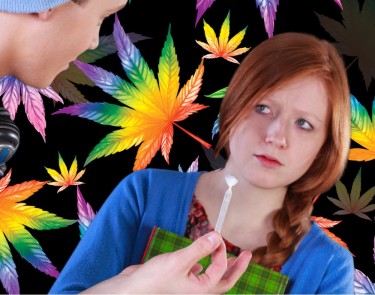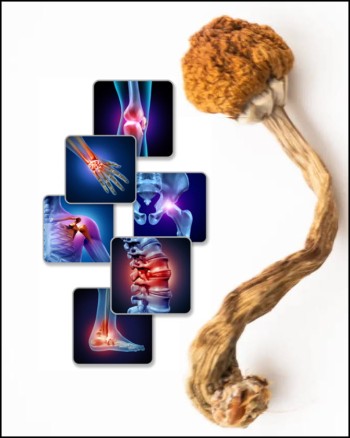
A recent editorial on Cannabis.net titled "The Kids Will All Be Getting High Turns Out to Be 100% Wrong" went viral as it pointed out that the long held Reefer Madness myth of kids getting stoned all day with the legalization of cannabis across America is not accurate based on government studies and data.
In a landscape marked by the dynamic evolution of cannabis policies across the United States, the 2022 Monitoring the Future (MTF) survey emerges as a critical lens through which we examine the complex interplay between state-level marijuana legalization and teenage cannabis use. Against the backdrop of expanding adult-use markets in various states, the survey, conducted by the University of Michigan with funding from the National Institute on Drug Abuse (NIDA), presents a nuanced perspective on the resilience of teen marijuana consumption. Despite concerns from critics, the survey reveals that rates of past-year cannabis use among adolescents have remained remarkably stable, challenging assumptions about the anticipated impact of widespread state legalization on youth access and perceptions.
Stability Amidst Legalization
In the face of an expanding mosaic of state-level cannabis legalization, the first notable revelation from the 2022 MTF survey is the steadfast stability in rates of past-year cannabis use among teenagers. Despite the continuous growth of adult-use markets and the addition of 11 more states to the legal landscape between 2020 and 2022, the survey findings challenge prevailing concerns that greater accessibility would inherently lead to increased teen marijuana consumption. Chief of NIDA’s epidemiological research branch, Marsha Lopez, emphasized during a webinar that there have been no substantial increases reported across all three grades surveyed—eighth, tenth, and twelfth.
The survey's data not only contradicts projections but also dispels the notion that the liberalization of marijuana policies at the state level translates into a heightened perception of availability among adolescents. Interestingly, as adult-use legalization unfolds across the nation, there is no corresponding surge in perceived availability reported by the surveyed teenagers. This disconnect between the adult and youth experiences suggests a decoupling of trends, prompting a deeper exploration into the factors influencing adolescent behaviors in the context of evolving marijuana regulations.
Furthermore, the findings challenge the historical narrative that an increase in perceived availability would invariably lead to an uptick in cannabis use among teenagers. Despite the "historic highs" observed in adult marijuana and psychedelic use in 2022, the survey data underscores that these trends do not find a parallel manifestation among the younger demographic. The resilience of stable usage patterns suggests a complex interplay of social, regulatory, and educational factors that shape teenage attitudes towards cannabis in the midst of a rapidly transforming legal landscape.
Changing Consumption Trends and Delta-8 THC Products
Beyond the stability in overall cannabis use, the MTF survey sheds light on the evolving landscape of teenage consumption habits. The second major insight revolves around a gradual shift in methods of cannabis intake, with an increasing number of youths turning to vaping and edibles. This shift signifies a departure from traditional smoking methods and underscores the adaptability of young cannabis users to emerging trends in consumption. As societal attitudes and product availability evolve, understanding these changing consumption patterns becomes crucial for policymakers and public health officials alike.
Adding a new dimension to the survey, researchers delve into the world of delta-8 THC products, a category often derived from federally legal hemp and sold in an unregulated market. Notably, the survey reveals that 11.4% of twelfth graders reported past-year use of delta-8 THC products, marking a notable inclusion in the survey's repertoire. The elevated usage levels among this age group prompt a call for sustained monitoring as policies surrounding these products continue to develop. The emergence of delta-8 THC products in teenage consumption habits introduces a layer of complexity to the ongoing dialogue on regulatory frameworks and their impact on youth access to novel cannabis derivatives.
As the survey introduces data on these intoxicating products for the first time, it sets the stage for future discussions on how changing product landscapes might influence teen cannabis use. The inclusion of delta-8 THC in the survey highlights the need for ongoing research and regulatory attention to understand the implications of novel cannabis derivatives on the behavior and perceptions of adolescents, providing a comprehensive view of the evolving cannabis market's impact on the younger demographic.
Contrasting Perspectives and Additional Studies:
In the context of contrasting perspectives on the impact of cannabis legalization on youth consumption, the third major insight from the MTF survey involves a comprehensive examination of various marijuana-related indicators across states with differing legal frameworks. The survey engages in a comparative analysis, exploring states where cannabis remains illegal alongside those where it is legal for medical use. Strikingly, the data reveals no statistically significant difference in rates of past-year cannabis use across all surveyed grades, irrespective of the state's marijuana laws.
This nuanced approach challenges the notion that legalization, either for adult-use or medical purposes, inherently correlates with increased youth cannabis use. The survey findings provide empirical evidence suggesting that state-level policies alone may not be the sole determinant of adolescent behaviors concerning cannabis. Understanding these variations becomes pivotal for policymakers seeking to navigate the complex landscape of marijuana regulations while addressing concerns about youth access and public health.
Moreover, the survey results contribute to a broader discourse by referencing additional studies that both support and challenge prevailing beliefs regarding the relationship between cannabis legalization and youth consumption. These studies, spanning various methodologies and geographical contexts, collectively underscore the need for a nuanced understanding of the intricate factors influencing adolescent cannabis use. As the nation grapples with evolving attitudes toward cannabis, the MTF survey encourages a more comprehensive and evidence-based approach to inform ongoing discussions surrounding marijuana policies and their impact on the younger generation.
Bottom Line
The 2022 Monitoring the Future (MTF) survey provides a compelling snapshot of the intricate dynamics surrounding teenage cannabis use amidst the backdrop of expanding state legalization. Contrary to concerns, the survey underscores the resilience of stable usage patterns among adolescents, challenging assumptions about the purported link between adult-use legalization and increased youth consumption. The exploration of evolving consumption trends, including the introduction of delta-8 THC products, adds a nuanced layer to the discussion, highlighting the adaptability of young users to changing market landscapes. The survey's comparative analysis across states and reference to additional studies contribute to a more comprehensive understanding, emphasizing that state-level policies alone do not dictate adolescent behaviours. As the nation navigates the complexities of cannabis regulations, the MTF survey calls for a continued evidence-based approach, urging policymakers to consider the multifaceted factors influencing youth cannabis use in shaping effective public health strategies.
TEEN CANNABIS USE DOES NOT GO UP WITH LEGALIZATION, READ ON...
THE KIDS DON'T SMOKE MORE WEED WITH LEGALIZATION, WHAT DO YOU KNOW?







